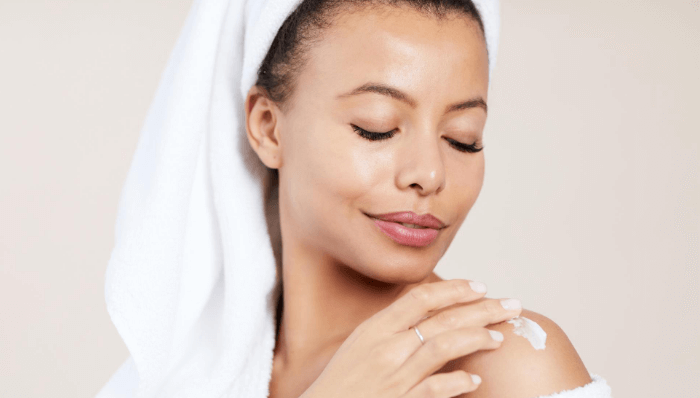Got Stubborn Acne? Here Are 5 Less Obvious Root Causes
Acne is a skin issue that plagues millions of people, from adolescence to post-menopause, to the point that many feel it is inevitable. Sometimes acne is easily managed with simple changes to one’s skin care routine, or by cutting down on common triggers such as dairy, gluten, and sugar. However, many people struggle with stubborn acne that, despite healthy topical skin care, diet, and lifestyle choices, just won’t clear.
Here are 5 things to consider if you have stubborn acne:
1. Genetics
People with stubborn acne often blame genetics. We now know that “bad genetics” can be overwritten by epigenetic factors–a nutrient-dense diet and healthy lifestyle factors such as rest and regular movement. However, it is true that some people are genetically predisposed to acne itself–but others have genetic reasons that explain why that is.
Fortunately, genetic testing–namely nutrigenomic testing–is now widely available and can provide very helpful guidance. Nutrigenomic testing looks at your genetics–often specifically single nucleopeptides (SNPs)–to uncover reasons that explain WHY someone is predisposed to acne. Some examples are nutrient deficiencies or the inability to metabolize specific lipids or substances like caffeine and alcohol. Research also shows how certain foods can actually turn genes “on” or “off” in our bodies. For example, certain compounds found in broccoli have the ability to “switch on” a specific gene that helps some people detoxify some of the harmful chemicals we’re exposed to.
With that information, more targeted choices can be made for foods, supplements, and even topical skincare ingredients for maximum bioavailability.
2. pH Balance
“pH” stands for “potential of hydrogen,” and is a measurement of how acidic or alkaline a substance is. 0 is the most acidic, and 14 is the most alkaline. Distilled water is considered “neutral” at 7. Did you know that most mass-produced skin care products on the market that claim to be pH balanced are not balanced to the natural pH range of the skin? They would more accurately be labeled as “pH neutral,” since most have a pH of 7.
Our skin’s pH is slightly acidic, typically ranging from 4.5 to 5.5. This slightly acidic environment is a necessary part of the skin’s immune function, as the beneficial microbes that live in and on the skin’s surface require it. The skin’s lipid matrix (also commonly referred to as “lipid barrier,” “acid mantle,” and “natural moisturizing factor”) also requires this slightly acidic pH to stay intact. Repeatedly applying leave-on skin care products that are too alkaline (even though 7 is neutral on the scale, it is too alkaline for the skin) can adversely affect the skin’s lipid matrix by neutralizing its naturally occurring fatty acids, and thus creating an uninhabitable environment for the skin’s microbiome, leading to dysbiosis. It can also negatively affect sebum production and cause dryness and irritation. Look for topical skin care products that are pH balanced to the skin’s pH–not the pH of water, such as the products in The Spa Dr.® Daily Essentials 4-Step System.
3. Toxic mold
Sometimes stubborn acne is stubborn because it has a less obvious root cause. One common, overlooked potential cause is fluoride in water. Another that is equally as problematic and may be even more hidden is toxic mold.
Mold exists everywhere–in our homes and offices, in our outdoor environments, in the foods we eat, and even inside our bodies. If we maintain a healthy and diverse microbiome and take measures to make our home and work environments less habitable to toxic mold, it doesn’t have to be problematic. However, for many people–especially people who struggle with high stress, chronic illness, or autoimmune disease–that is not the case.
Mold produces mycotoxins, which are secondary metabolites capable of causing disease and death in humans and other animals. Some mycotoxins or mycotoxin derivatives have been found to have useful properties, but others are highly toxic to humans and can trigger local and systemic infections. Mycotoxins can also trigger rosacea, hyperpigmentation, and eczema flares, as well as certain types of acne. If your acne hasn’t cleared after making other positive changes, check to see if you’ve been exposed to a water-damaged, damp, or musty-smelling building. If you have, mold could be the culprit, and mold treatment could eradicate the problem for good.
4. Unbalanced Skin Care Routine
A long-held myth about oily and acne-prone skin (AKA the Olivia skin type, as described in Clean Skin from Within) is that it can’t handle oils. This is why so many acne products are oil-free. Let’s bust that myth today because the truth is that all skin types need both water (hydrating and humectant ingredients) and oil (emollient ingredients) to support healthy sebum production and barrier function.
The skin’s microbiome also requires both water and oil to maintain biodiversity, since some bacteria and microflora are hydrophilic, and others are lipophilic. Too much or not enough water or oil in one’s topical skin care regimen can disrupt the skin’s microbiome, killing off beneficial microbes and allowing others to become opportunistic.
The Spa Dr.® Daily Essentials 4-Step System is a well-balanced system, providing both hydration and emollient protection with humectant ingredients like aloe vera and hyaluronic acid and protective oils such as cranberry seed, raspberry seed, and apricot kernel oil.
5. Stress
Unmanaged stress adversely affects every organ and system in the body. The effects are so significant that stress can undo the benefits of eating clean, exercising regularly, getting enough sleep, using high-quality natural skin care products, etc. Unmanaged stress is one of the greatest reasons why some people’s acne just doesn’t clear, even when it seems like they are doing everything else right.
As Dr. Cates writes in Clean Skin from Within, “Stress is not the only cause of acne, but it is a big culprit. When we’re stressed, the adrenal glands release the hormone cortisol. A surge in cortisol causes increased sebum production, which triggers acne. Chronically high cortisol levels can lead to sugar cravings, and eating sugar also triggers acne breakouts.”
We all have stress, and not all stress can be eliminated. It is essential to learn to manage it using mindfulness, journaling, listening to guided meditations, taking dance breaks, going to therapy, and spending time in nature. Other stress management practices may seem obvious, but most people don’t do enough rest and say no. Overworking is an epidemic here in the United States. It has not been good for our collective health or happiness. We also don’t say no often enough. Most people (women especially) aim to please and want to avoid conflict. They sacrifice their own time and needs in order to say yes to please or appease others. This is inherently stressful, and that stress accumulates.
Even the most stubborn acne can be managed holistically. Doing “everything right” doesn’t necessarily mean that that particular “right” is right for you, or right for right now. Sometimes we need to re-evaluate, take a deeper look into root causes and lifestyle factors, and make adjustments to achieve lasting results.
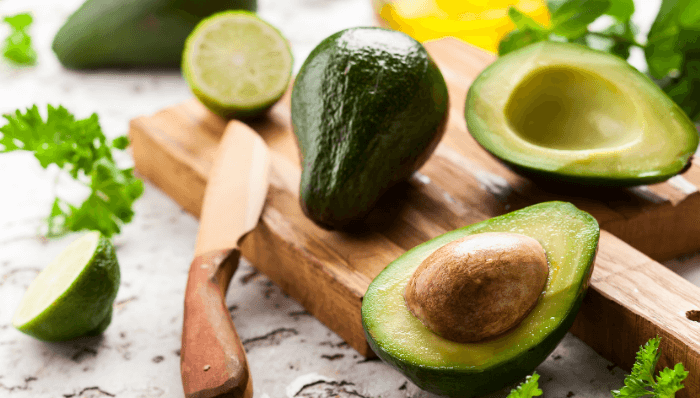 Avocados are quite nutrient-dense, offering a combination of healthy fats, protein, vitamins, and trace minerals. Avocados provide monounsaturated fatty acids (which are healthy fats) that help regulate blood sugar, support healthy HDL cholesterol, and nourish skin cells.
Avocados are quite nutrient-dense, offering a combination of healthy fats, protein, vitamins, and trace minerals. Avocados provide monounsaturated fatty acids (which are healthy fats) that help regulate blood sugar, support healthy HDL cholesterol, and nourish skin cells. 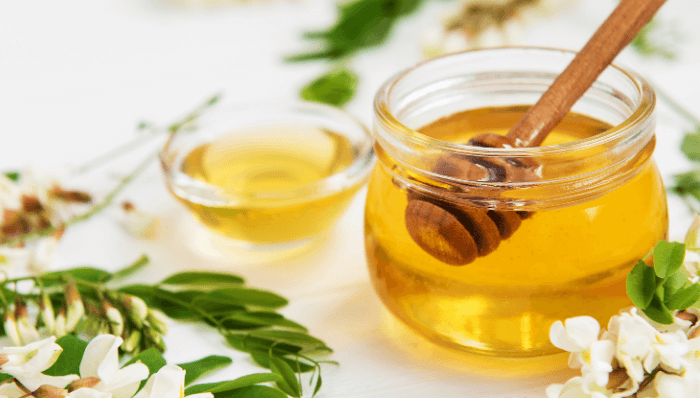 Honey is one of the most ancient and powerful remedies that nature provides. Using honey for skin and wellness dates back to
Honey is one of the most ancient and powerful remedies that nature provides. Using honey for skin and wellness dates back to  Oats are known for their soothing and calming skin benefits for irritated or angry skin. You may remember soaking in an oatmeal bath when you had chicken pox or poison ivy as a kid for those reasons. Oats are highly beneficial for the skin, and contain different types of phenolic and flavonoid antioxidants, minerals, amino acids, and naturally occurring saponins which assist with cleansing.
Oats are known for their soothing and calming skin benefits for irritated or angry skin. You may remember soaking in an oatmeal bath when you had chicken pox or poison ivy as a kid for those reasons. Oats are highly beneficial for the skin, and contain different types of phenolic and flavonoid antioxidants, minerals, amino acids, and naturally occurring saponins which assist with cleansing. 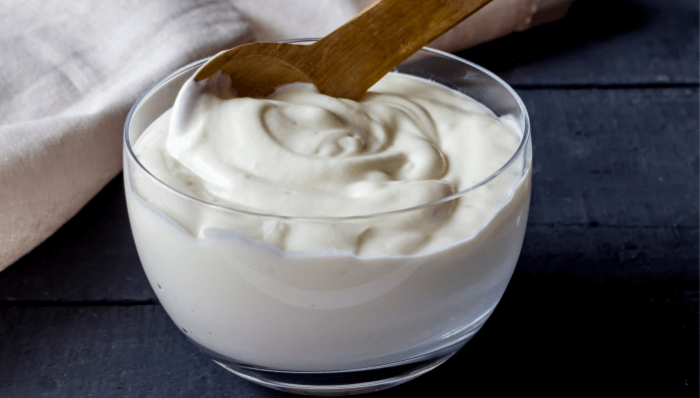 Aside from honey, yogurt is one of the most ancient natural ingredients to be used for skin care and to promote health and longevity. Using yogurt for skin (for cleansing and moisturizing) dates back to
Aside from honey, yogurt is one of the most ancient natural ingredients to be used for skin care and to promote health and longevity. Using yogurt for skin (for cleansing and moisturizing) dates back to 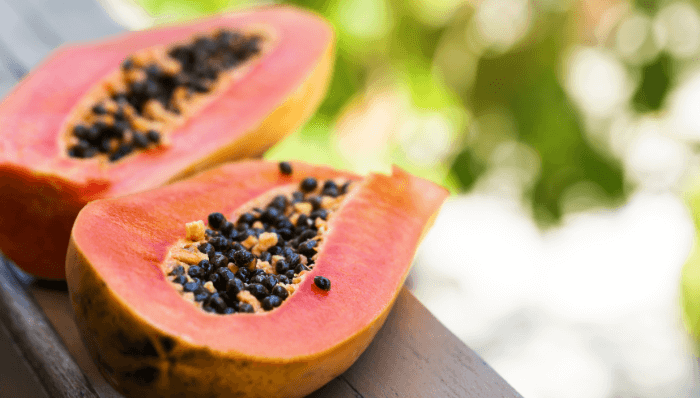 In the worlds of nutrition and aesthetics, papaya is considered most useful for its main enzyme papain. Papain is an enzyme that digests proteins, both internally and topically. On the skin, papain is used in products intended to exfoliate, improve the appearance of scars and overall skin texture, and brighten dark spots and uneven pigmentation. It is important to note that the papain found in conventional skin care products is often synthetically made and far more concentrated than that found in raw papaya. However, even in its whole food form, papain is a powerful enzyme that may cause irritation for more sensitive skin types; so we don’t recommend applying straight raw papaya to the skin if you have a Heath or Emmet skin type. However, papaya is often fine for Amber, Olivia, and Sage skin types.
In the worlds of nutrition and aesthetics, papaya is considered most useful for its main enzyme papain. Papain is an enzyme that digests proteins, both internally and topically. On the skin, papain is used in products intended to exfoliate, improve the appearance of scars and overall skin texture, and brighten dark spots and uneven pigmentation. It is important to note that the papain found in conventional skin care products is often synthetically made and far more concentrated than that found in raw papaya. However, even in its whole food form, papain is a powerful enzyme that may cause irritation for more sensitive skin types; so we don’t recommend applying straight raw papaya to the skin if you have a Heath or Emmet skin type. However, papaya is often fine for Amber, Olivia, and Sage skin types.  The most common “gold standard” preservative in cosmetics, for the majority of the existence of the industry up until 2004 was the family of parabens. Methyl-, propyl-, isobutyl-, and other prefixes of the paraben family offered cosmetic chemists extremely effective broad spectrum protection, ease of formulation, long shelf life (sometimes longer than 3 years), at a very low percentage in just about any emulsion, gel, or water-based product. They are also extremely inexpensive.
The most common “gold standard” preservative in cosmetics, for the majority of the existence of the industry up until 2004 was the family of parabens. Methyl-, propyl-, isobutyl-, and other prefixes of the paraben family offered cosmetic chemists extremely effective broad spectrum protection, ease of formulation, long shelf life (sometimes longer than 3 years), at a very low percentage in just about any emulsion, gel, or water-based product. They are also extremely inexpensive.  Synthetic fragrances (listed as “fragrance,” “natural fragrance,” or “parfum” on product labels) are the most likely ingredients in products to cause allergic and irritant reactions, and many of them are toxic. According to the
Synthetic fragrances (listed as “fragrance,” “natural fragrance,” or “parfum” on product labels) are the most likely ingredients in products to cause allergic and irritant reactions, and many of them are toxic. According to the 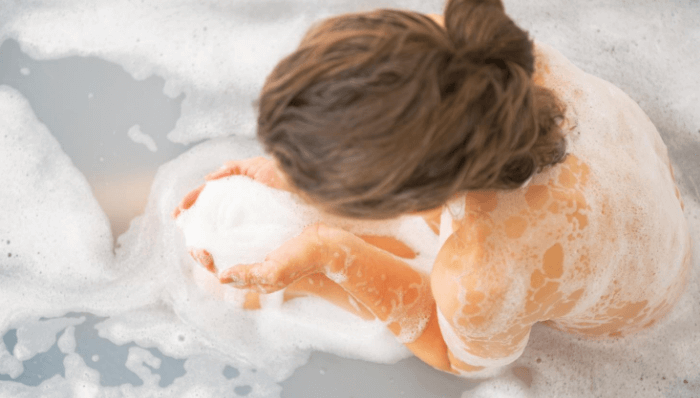 S
S This is one of the preservatives that was commonly used to replace parabens in skin care products after the 2004 study rocked the industry. Chemists liked (and still do like) it because it can still be used at a low percentage, is inexpensive, and is very effective at inhibiting the growth of gram positive and gram negative bacteria, mold, and yeast. However, one of the earliest indicators that phenoxyethanol was problematic was reports of eye irritation (it is commonly used in eyeliners and mascaras), as well as skin irritation.
This is one of the preservatives that was commonly used to replace parabens in skin care products after the 2004 study rocked the industry. Chemists liked (and still do like) it because it can still be used at a low percentage, is inexpensive, and is very effective at inhibiting the growth of gram positive and gram negative bacteria, mold, and yeast. However, one of the earliest indicators that phenoxyethanol was problematic was reports of eye irritation (it is commonly used in eyeliners and mascaras), as well as skin irritation. 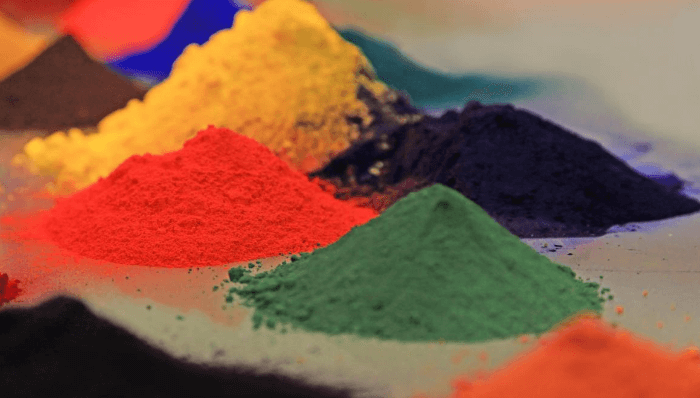 Colorants in skin care are not all toxic–many green beauty brands have chosen to use natural plant and non-toxic mineral pigments. However coal tar dyes and lake colorants are still the most commonly used synthetic colorants in skin care, personal care products, hair dyes, and color cosmetics.
Colorants in skin care are not all toxic–many green beauty brands have chosen to use natural plant and non-toxic mineral pigments. However coal tar dyes and lake colorants are still the most commonly used synthetic colorants in skin care, personal care products, hair dyes, and color cosmetics. 

